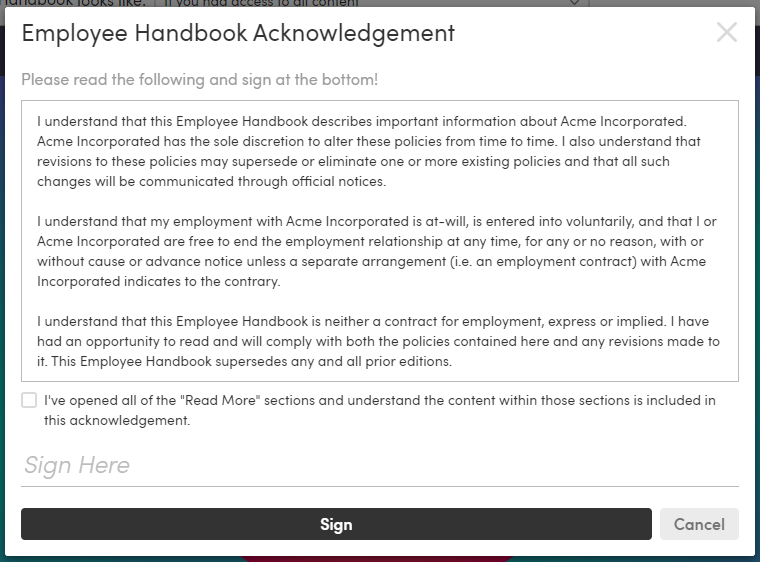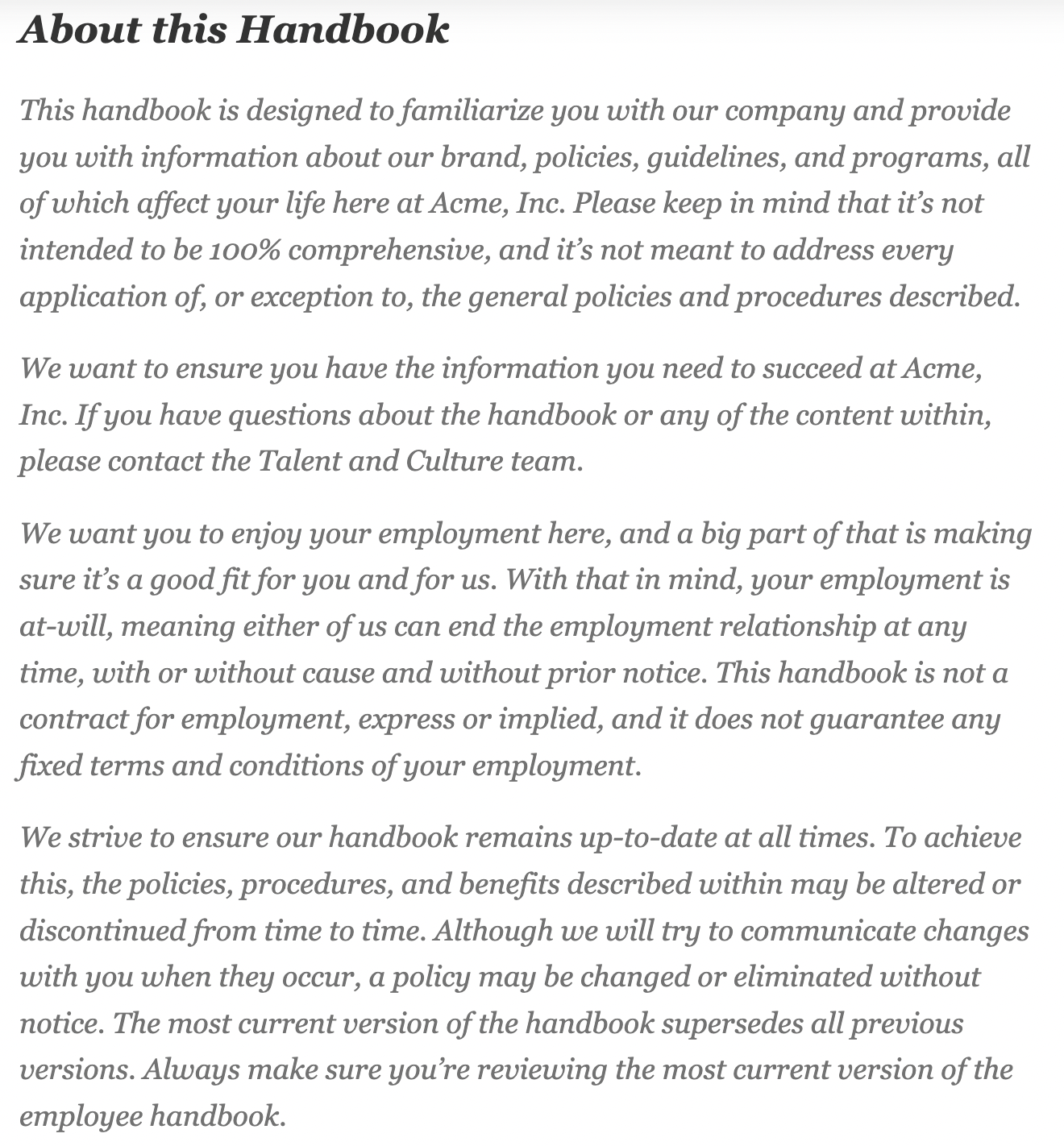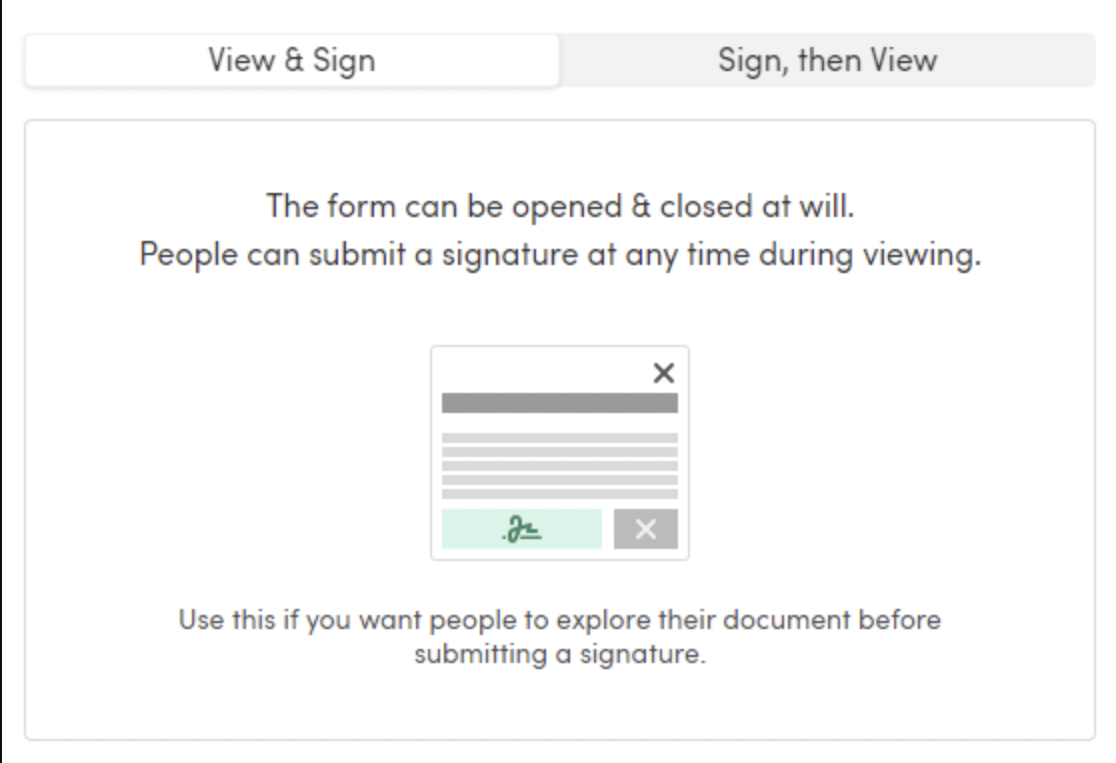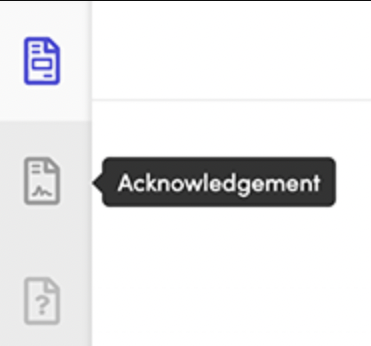Does an Employee Handbook Create an Employment Contract?
Employee handbooks play a key role in the workplace. They lay out the rules employees need to follow and are meant to make sure everyone knows what is expected, which helps your workplace run smoothly.
Before you share your handbook with employees, there’s a big question you must answer: Could your handbook create legally binding employment contracts? This is an important question with serious implications. If your handbook can be deemed a promise for employment, then you could be liable for all sorts of things that you don’t expect.
The answer to whether a handbook could be considered a contract varies depending on how the handbook is worded and the laws in the specific location. However, there are some general guidelines you can follow to avoid your risks here.
Let’s dive into these issues, with explanations and insights into why the status of employee handbooks as contracts is a significant matter for everyone in the workplace.
The Difference Between an Employee Handbook and an Employment Contract
An employment contract is a formal agreement between an employer and an employee. It clearly states the job role and responsibilities, hours, salary, benefits, and terms of the employment relationship. Once signed, both sides are legally bound to follow what’s in it.
An employee handbook is different. It’s a document that organizations give to their staff to explain their rules, policies, and procedures. This includes how to request time off, dress code expectations, and how the company handles issues like harassment or safety concerns. Handbooks are important because they ensure everyone knows what’s expected of them at work, making the workplace fair and organized. While it shares information on how things are done at the company, it isn’t meant to bind the employee and employer into a relationship the way a contract does.
Let’s look at the main differences between employment contracts and employee handbooks:
Definition and Purpose
- Contracts are a two-way legal agreement between two specific parties. They clearly list the duties, terms, and conditions that govern a relationship.
- Handbooks serve as guides for employees about the company’s rules, culture, and how things generally operate. They’re a one-way communication from the employer to all employees.
Flexibility and Amendments
- Contracts need both sides to agree to any changes, which often involves a formal process.
- Handbooks can be changed by the employer alone but, ideally, employees should be notified about material changes.
Duration and Validity
- Contracts have a clear start and end date or conditions for ending a specific relationship.
- Handbooks don’t expire and are updated when needed, without a fixed end date.
Scope
- Contracts focus on specific job’s agreed upon details, roles, duties, and compensation.
- Handbooks cover a lot of topics, from the company’s values to detailed rules about how the company operates.
Use of Language
- Contracts use detailed, clear language specific to an employee’s relationship with their employer.
- Handbooks are written for a wider audience, with information that applies to all employees regardless of role, including “cultural” information like your mission and values. Given a recent ruling by the NLRB, you should take care not to make policies overly broad.
Acknowledgment
- Contracts must be signed by both parties, showing they agree to the terms.
- Handbooks technically don’t need to be signed, but it is highly encouraged and your position in any legal dispute is greatly enhanced if an employee has signed their handbook acknowledgement. Employees only need a sign-off that they received it, not that they agree to everything as they would with a contract. Your signature page, also know as an acknowledgement form, should also emphasize that the handbook is not a legal document or employment agreement.

While contracts establish a legal agreement with clear obligations and terms between two specific parties, handbooks provide general guidance on company policies and culture. The flexibility to amend, the duration of validity, the scope of content, the precision of language, and the nature of acknowledgment all distinguish these documents significantly.
Situations Where Handbooks Might Be Seen as Contracts
Sometimes, employee handbooks can cause confusion and might even seem like contracts. This can happen in a few ways:
1. Unclear Language
When handbooks use words that are not clear or are too complicated, it can lead to misunderstandings, making employees think they are promised something that might not actually be guaranteed. It’s very important to use simple and clear words so everyone knows exactly what is meant.
According to Acosta v. Hilton Worldwide (this is in South Carolina), “A handbook forms an employment contract when: (1) the handbook provision(s) and procedure(s) in question apply to the employee, (2) the handbook sets out procedures binding on the employer, and (3) the handbook does not contain a conspicuous and appropriate disclaimer.”
The most common risk of unclear language in an actual handbook is within your disciplinary action policy. If you have a procedure that creates an expectation amongst employees that they’ll have to progress through different warning stages before they are fired, and you don’t do all those steps before you fire them, then your handbook could have accidentally created an employment contract.
When creating an employee handbook, avoid long, convoluted sentences and legalese to reduce the chance of misinterpretation. Instead, use short, direct sentences, organize information with bullet points, and categorize topics under clear subheadings. You could also summarize content for employees and put the complex language behind a “read more” button, as long as the summary doesn’t conflict (see reason #2 below).
By employing clear, concise language, handbooks become more accessible, enabling employees to easily grasp and comply with the outlined policies.
2. Misleading Clauses or Terms
Sometimes, handbooks have sections or words that can be confusing. Stay away from terms that imply promises about job security, benefits, or policies that seem unchangeable. For example, talking about job security or how long someone will have their job could make it seem like there are promises about these things. If not written clearly, people might think these are guaranteed, like in a contract.
Again, the biggest risk here is among any procedures you have around termination or what will happen if a policy is violated. You want to be clear in any of these cases that employment is at-will and the employment relationship can be ended at any time for any reason.
3. Not Saying It’s Not a Contract (otherwise called a “disclaimer”)
Handbooks should always have a note saying that the handbook is not a contract. This note is called a disclaimer. It tells everyone that the handbook is just a guide and not a set of promises. If a handbook doesn’t have this note, employees might have legal recourse to say the handbook is a contract that assures certain things about their job.
To create an effective disclaimer, here are some guidelines to follow:
- Make it clear that the handbook is not a contract and shouldn’t be seen as one.
- Mention that the job is at-will, meaning both the employer and employee can end the employment anytime without a reason or warning, unless there’s a specific written contract that says otherwise.
- State that the company has the right to change or interpret the handbook’s policies. This shows that the company can adapt policies to fit different situations.
- Say that the company won’t be held responsible for any misunderstandings from the handbook, as long as the company is following the law.
- Ask employees to talk to their supervisor, HR, or a company representative if they have questions about the handbook.
The disclaimer is important because it:
- ensures employees understand that the handbook does not constitute a legally binding contract.
- gives the organization the ability to update or modify policies as necessary without extensive procedures.
- reduces the likelihood of employees misinterpreting the content of the handbook as guaranteed promises.
- acts as a safeguard against potential legal challenges by clarifying the intent and application of the handbook’s policies.
- provides an additional layer of protection in legal disputes, particularly in cases of disciplinary actions or termination.
- encourages better compliance with company policies.
Below is Blissbook’s sample disclaimer template. As you can see, it’s normal to use similar words in the part where employees agree or sign:

4. Mixing Contract Language with your Acknowledgement Form
You’ll want to keep some content separate from your handbook. Don’t include any policy or content that allow a judge or jury to reason that your handbook could be interpreted to be a contract.
Mixing forms that would usually be signed within or alongside an employment contract with your handbook is an unnecessary risk. Judges and juries naturally want to side with an employee; don’t want to give them an excuse to do so.
You also want to exclude any content that’s usually customized on a per-employee basis. Per the differences described earlier in this article, that’s exactly the type of stuff that would appear in a contract.
Examples include:
- Non-compete or confidentiality agreements
- NDAs (Non Disclosure Agreements)
- Trade secret, inventions, or IP agreements
In a nutshell, it’s important for handbooks to be clear and for everyone to know they are not the same as a contract. This helps avoid misunderstandings.
The Risks of Treating an Employee Handbook as a Contract
When a company’s employee handbook can be interpreted to be an employment contract, it can lead to several problems:
Making Promises by Accident
As mentioned above, without meaning to, sometimes a company might make promises in the handbook that are difficult to keep. For example, if the handbook talks about job security or specific benefits without clear conditions, employees might expect these things no matter what. This can be a problem if the company needs to change these policies later or dismiss an employee.
Legal Disputes
If employees think the handbook is full of promises and not just guidelines, they might take legal action if they feel these promises are broken. This could happen if the handbook is unclear about things like pay raises, job duties, or how long someone will have their job. Legal battles can take a lot of time and money and can harm the company’s reputation.
Problems with Changes in the Business
Businesses need to change and adapt all the time. If everyone sees the handbook as fixed and unchangeable, it makes it hard for the company to update policies or make important changes. This can be a big problem when the company needs to react quickly to new challenges or opportunities. Being stuck with outdated rules can slow down progress and make it hard to keep up with competitors.
For these reasons, it’s very important to be clear that the handbook is a guide, not a set of unbreakable promises.
Guidelines to Avoid Making Your Employee Handbook Into a Contract
Creating an effective employee handbook is crucial for setting the right expectations and guidelines within the workplace. However, it’s equally important to ensure that this handbook is not perceived as a legally binding employment contract. To achieve this balance, specific measures and careful wording must be employed throughout the document. The goal is to provide clear, comprehensive information about company policies, procedures, and expectations without inadvertently creating contractual obligations.
Moreover, it’s essential to encourage open communication, inviting employees to seek clarification on any aspect of the handbook they find unclear. By following these guidelines, companies can create a handbook that effectively communicates the necessary information to employees while maintaining the flexibility needed to adapt to changing business environments and legal requirements.
Aside from the previously mentioned points of using clear language and including a disclaimer, here are some important things to consider to prevent an employee handbook from being mistaken for a contract:
Acknowledgment of Receipt
Have a part in the handbook where employees confirm they’ve received, read, and understood it (or at least just that they’ve received it). This section, aka a signature page, could be a form they sign and return, which helps show they know the handbook is not a contract. In more detailed approaches, companies may request employees to commit to following the policies within.
While it’s not legally required for employees to sign or acknowledge the handbook, doing so is widely regarded as a best practice. This step significantly lowers the risks for employers. It can often work like a “get out of jail free” card in a legal dispute. Such documentation proves invaluable in situations involving disciplinary actions, audits, or legal disputes, serving as evidence that employees were informed of and understood company policies.
It’s worth mentioning how Blissbook is a great resource for this process. Blissbook offers flexibility, allowing employees to either read the handbook and sign afterwards or sign initially before they review the handbook.

Blissbook also features a specific “Acknowledgement” section. You can simply paste your text into this area (or use Blissbook’s template for acknowledgement statements and tailor it as needed), and the platform sorts out everything else for you!

Regular Updates
Keep the handbook up-to-date with regular reviews and let employees know about any changes. This could be through emails, company meetings, or notices.
Blissbook kicks things up a level with its annotations feature, letting companies directly share updates about policies and other information right in the handbook while employees are looking through it.

No matter how you choose to distribute your handbook, it’s important to do it effectively so everyone can be on the same page with the latest policies.
Legal Review
Work with legal and/or HR professionals to look over your handbook regularly. They can help spot any language or policies that might cause problems. This helps make sure the handbook meets legal standards and doesn’t accidentally create contractual obligations. Did you know we review your handbook content too?
Following these steps can help ensure the employee handbook serves as a useful guide without being mistaken for a binding contract.
Final Thoughts
We’ve seen how employee handbooks and contracts are different, and why understanding this difference is so important. Handbooks guide and inform employees about their workplace, while contracts are legal promises between an employee and their employer.
Both employers and employees need to work together to understand what handbooks are all about. Legal professionals play a big part in this, making sure everything in the handbook is clear and doesn’t cause confusion.
We suggest giving the tips we shared a try, especially using Blissbook to create, design, and update your handbooks. Blissbook is a tool that can help you create a great handbook for your team. It’s a good step towards making sure everyone at work is on the same page. Give Blissbook a go and see how it can make handbook creation and updates simpler for you.